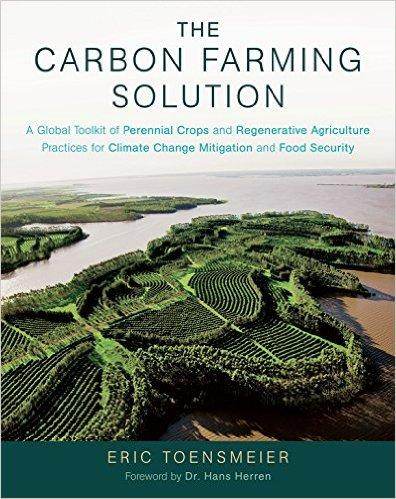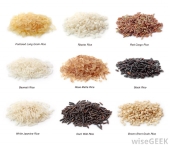I wrote this a few weeks ago. I'm not sure I'm in a position to join in a detailed discussion, but here are my thoughts for your consideration. I'll try to jump in with replies, but please don't expect an immediate turnaround.
This section of the book is the part that made me really geek out. I'm keen to identify as wide a range of species suitable to the climate I hope to be growing in as possible. I was disappointed to find that the entire
Artocarpus genus is restricted to the tropics: I've tried two of them (breadfruit (
A. altilis) and jakfruit (
A. heterophyllus)) and regard them as comparable to the potato for flavour, which is to say that they're not worth buying at the premium prices they fetch here but would be worth growing in terms of yield per hectare if I could provide them with suitable conditions, especially since they are open to being grown in a multi-strata agroforest. I can't, even where I hope to move to. Miffed. The same applies to plantains (
Musa × paradisiaca).
Air potato (
Dioscorea bulbifera) is another matter, and other yam (
Dioscorea)(1) species would go firmly on my annual list, since I much prefer those to potatoes, but are also a premium, shipped crop where I live at the moment. I think the main problem with chapter 12 is that it's too short. I'm wondering whether there are more basic starch crops than are actually mentioned here.
It's in chapter 13 where I start to worry about a big problem. If we are going to feed the world's growing population while avoiding further
land clearance, it's vital that these perennial staples yield at least as well as the existing annual ones. A shift down the food chain will help, but will not solve the problem unless we can keep yields per hectare up:
https://theconversation.com/can-we-feed-the-world-and-stop-deforestation-depends-whats-for-dinner-58091 (paper doi: 10.1038/ncomms11382). I'm interested in growing sorghum (
Sorghum bicolor), for example, but yields of this plant do not approach average yields for mainstream existing annuals. Sorghum and one or two other grain species will grow where others won't, or in conditions that will kill wheat, rice or even maize but, if the point of the exercise is to replace those annuals, then sorghum is one of those plants that requires serious breeding attention, which it's not receiving
enough of.
If I make it to the Mediterranean, I'll stick encina (
Quercus ilex) in my tallforest zone, but I intend to eat the acorns, not waste them on pigs. Encina is one of the few plants that will compete, in terms of yields, with some of those alternatives. I'd be interested to experiment with acorn breads, which will probably mean blending flours. I'd be interested to learn what edible species will grow in its shade.
The one that jumped out at me, from the bottom of page 160, is chia (
Salvia hispanica). I'm familiar with this as a high-protein addition to other foods rather than as a staple, but the
Salvia genus (true sage, not to be confused with American sage (assorted members of the
Artemisia genus)) is incredibly popular with pollinators. There are perennial species, and I'd be very interested in working on a hybrid for use in polycultures. My main concern would involve it outcrossing with
native Salvia species, so I'd want to discuss work on this with an expert. The same does not seem to apply to drinn (
Stipagrostis pungens), which does not seem to have relatives in Europe.
It's the section on woody pods that brings this problem into focus. I have many concerns with species that may become a problem in their own right such as mesquite (
Prosopis spp.) and
honey locust (
Gleditsia triacanthos) and with those that might outcross with natives and then become a problem. Often it's those very natives that may provide the genetic material to allow them to become a valuable crop. I'm aware of several species which have no obvious wild relatives, and I wonder to what extent our own early breeding efforts may have been implicated in their extinction. I'm going to pencil carob (
Ceratonia siliqua) on my tallforest list, although I'd want to keep an eye on it, but I wouldn't trust mesquite as far as I could chuck it.
Protein crops interest me. One of the perennial questions about perennial crop systems is whether or not they can produce enough protein. Most people in the Global North eat more protein than is necessarily healthy, but that does not change the fact that we do need to be producing enough protein on as little land as possible. Unlike Toensmeier, I accept that this is going to require a change in diets. Improved annual cropping
should allow us to continue to grow many annual legumes. That said, a perennialised soya bean (
Glycine max) would be an important contribution to food security and soil recovery. The problem is that most of these high-protein crops present the same potential threat as invasive monocultures as do other leguminous species: some are known to behave, while others are known problem species.
This is, however, the section where the main issues with making perennialised systems work become clear.
The problem, as I've indicated already, is one of yields. In the tropics, yields of a few perennial crops can outweigh those of annuals. The reverse is true in more temperate zones. At present there are no high-yielding basic starch crops suited for temperate zones. The air potato (
Discorea bulbifera) is one of only a few examples that might work into Mediterranean climates but, even in this case, the
water requirements present issues: I could probably work out how to grow this plant in Mediterranean climates, but I'd probably need to irrigate. There are a number of crops listed here that are worth growing outside the tropics, but we are going to need more land in order to grow them, unless we convert some growing land from existing crops or if we can figure out how to reliably achieve overyielding from temperate polycultures while preventing soil depletion, a process I suggest we have been grossly remiss in the empirical investigation of.
This, at
root, seems a good reason to back Toensmeier's view (page 324) that
I propose we stop feeding annual grains that are fit for human consumption to livestock. This could free up a third of our annual cropland (2) for perennial systems. It will probably mean less meat consumption in the Global North.
I suggest it will certainly mean less meat consumption in the Global North: to meet US demand for
beef alone on pastures, they country would need to convert half its total land area over to pasture just in order to meet its demand for beef, not taking into account anything else. Beef (and quite probably other meat) export from other countries will probably also have to stop (Ireland I'm looking at you, but you're not the only one).
I have two further thoughts on this chapter. One involves leaf protein concentrate. I've never tried it, but I do know it doesn't have a great reputation. I wonder whether it would respond to tempeh culture, and whether the high-fibre residues might make good
mushroom substrate.
Secondly, breeding moringa (
Moringa oleifera) to resist light frosts would enable it to be grown in Mediterranean climates. Perhaps obtaining seed from Nepal and then crossing it with African moringa (
M. stenopetala) and/or ben tree (
M. peregrina) would be a constructive use of someone's time. Moringa is usually grown as a perennial, but can be grown as an annual, making hybridisation a faster process than it is with many perennial plants.
I don't want to say too much about chapter 15 on protein-oil crops. I know most of us will be interested primarily in foodstuffs, but this chapter is actually a mine of potentially useful crops. I need to spend a several evenings going through this chapter looking for suitable plants, checking them against the Global Invasive Species Database and considering them for inclusion in several possible habitats, from open grassland to tallforest.
My present thinking is leaning towards systems that incorporate a combination of improved annual cropping systems with, for example, nitrogen-fixing
shelter belts and
polyculture perennials. This may be an interim solution as high-yielding perennials become available.
1) Note for Americans: this is not the same as the sweet potato (
Ipomoea batatas): I learned these are confused in North America when I went looking for yam recipes and kept coming up with sweet potato recipes. They have similar growing requirements, but are completely unrelated and have totally different flavour.
2) He does not give his working for this number, but a back-of-an-envelope calculation suggests that he's unlikely to be too far wrong.






 1
1





























 it need damp areas which is something that's not an issue for me
it need damp areas which is something that's not an issue for me











 1
1




 1
1





















